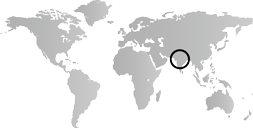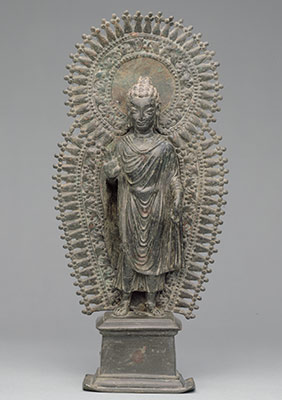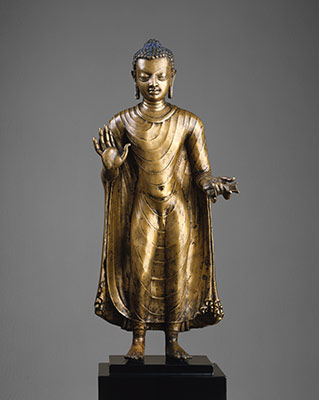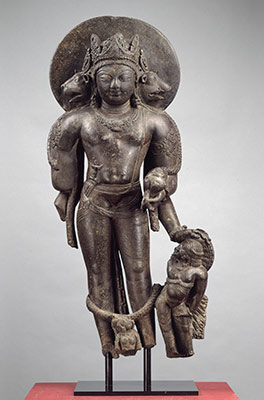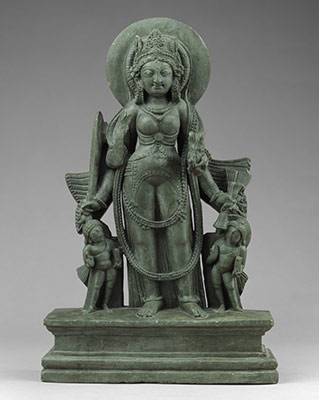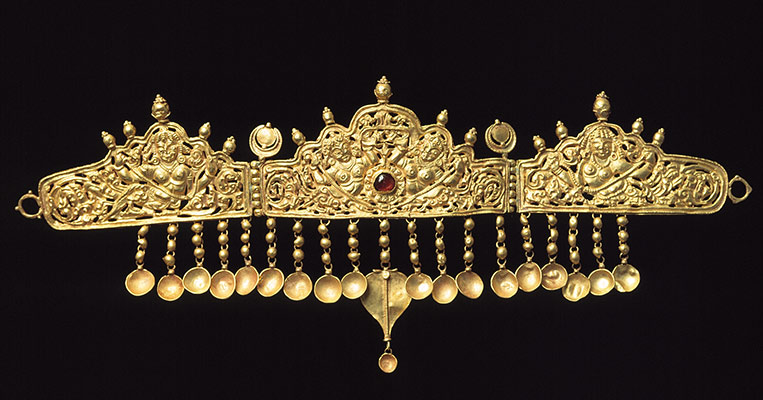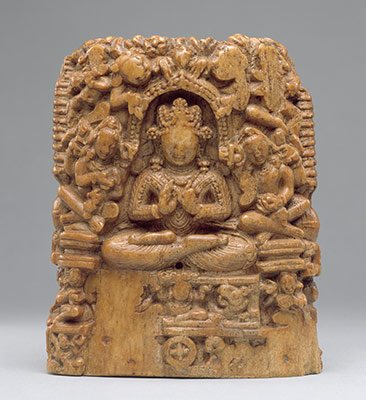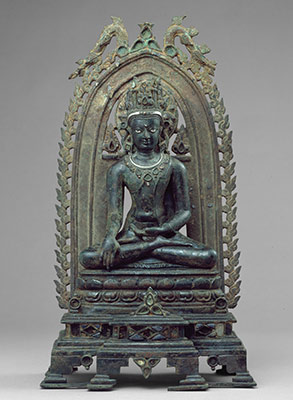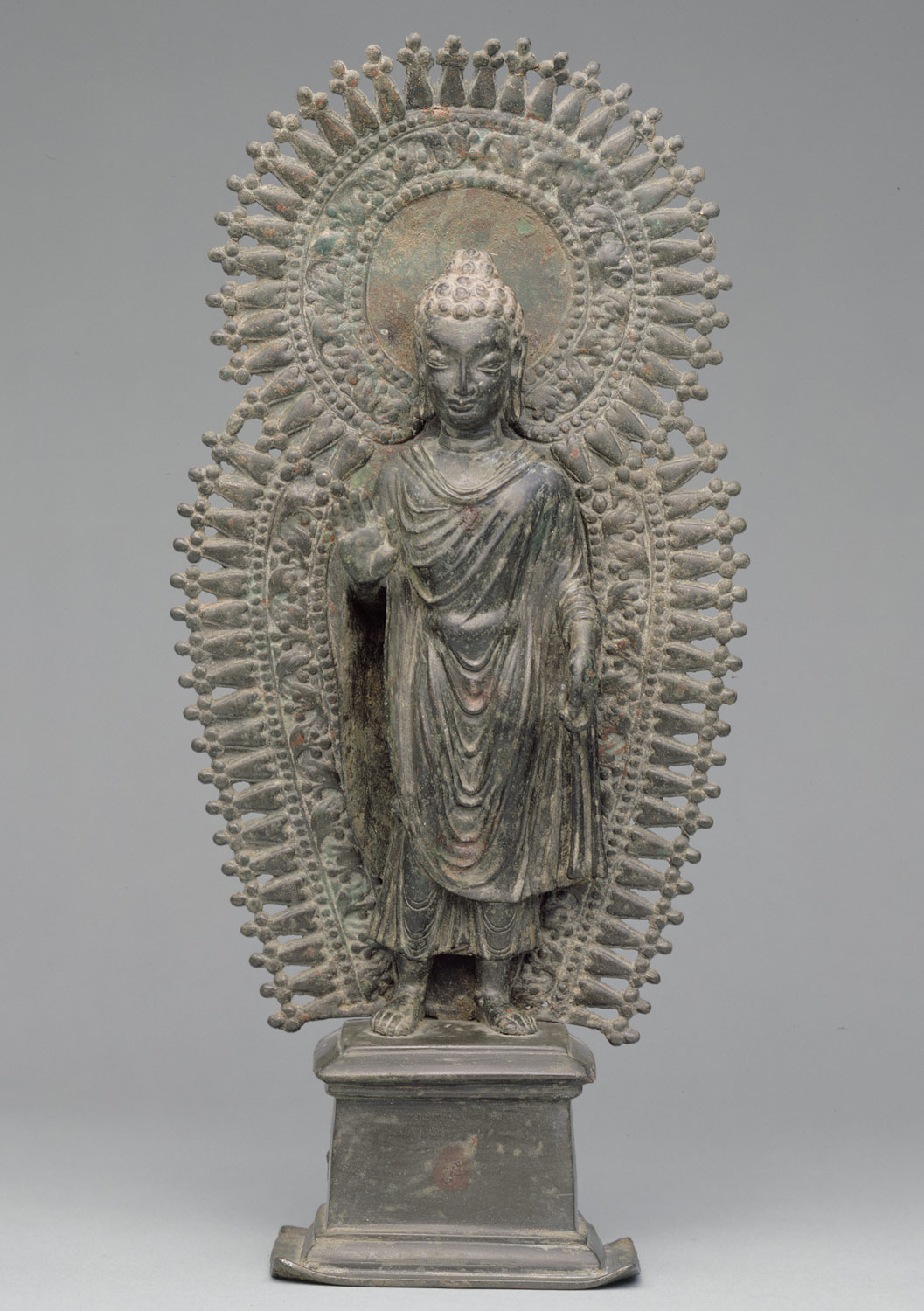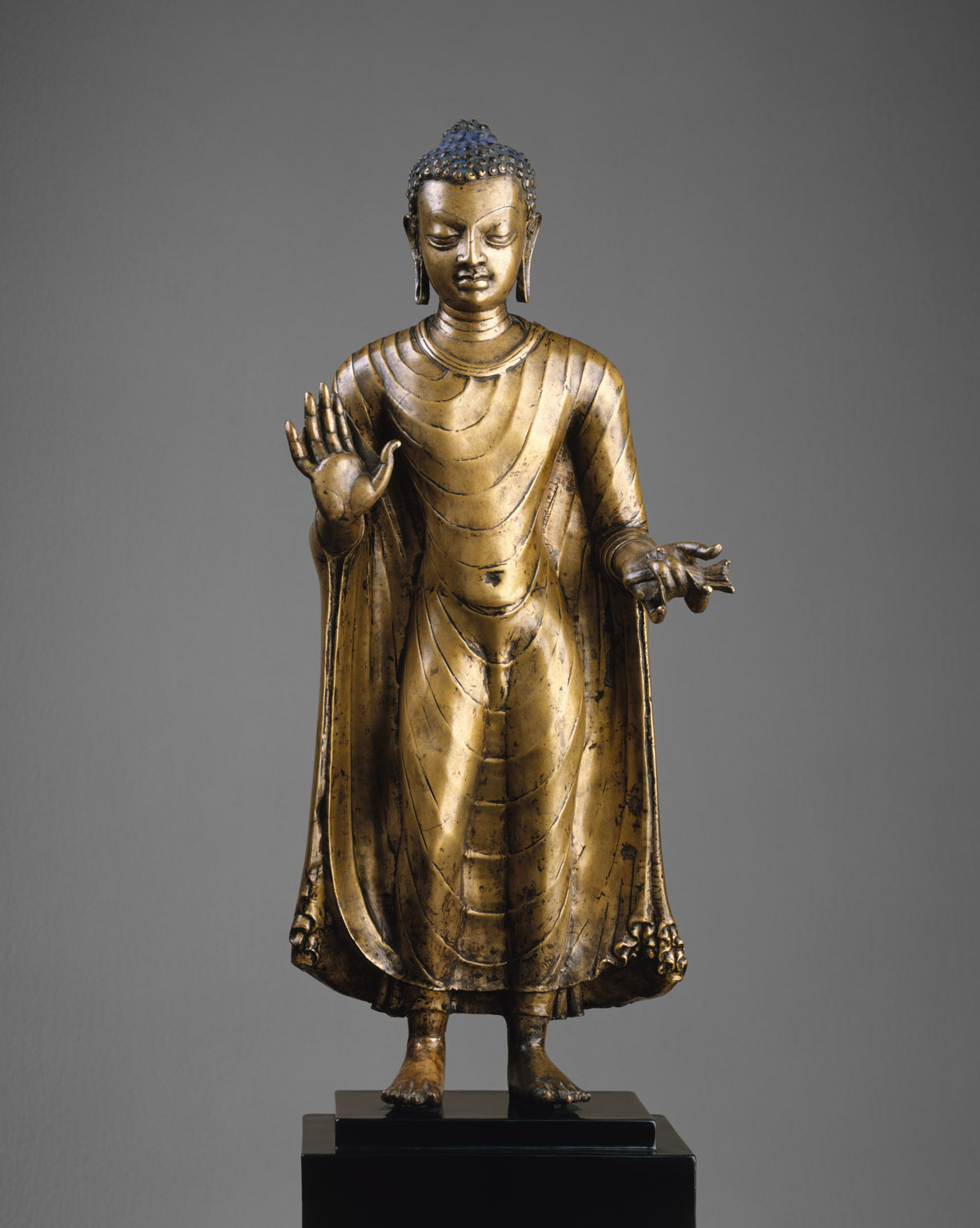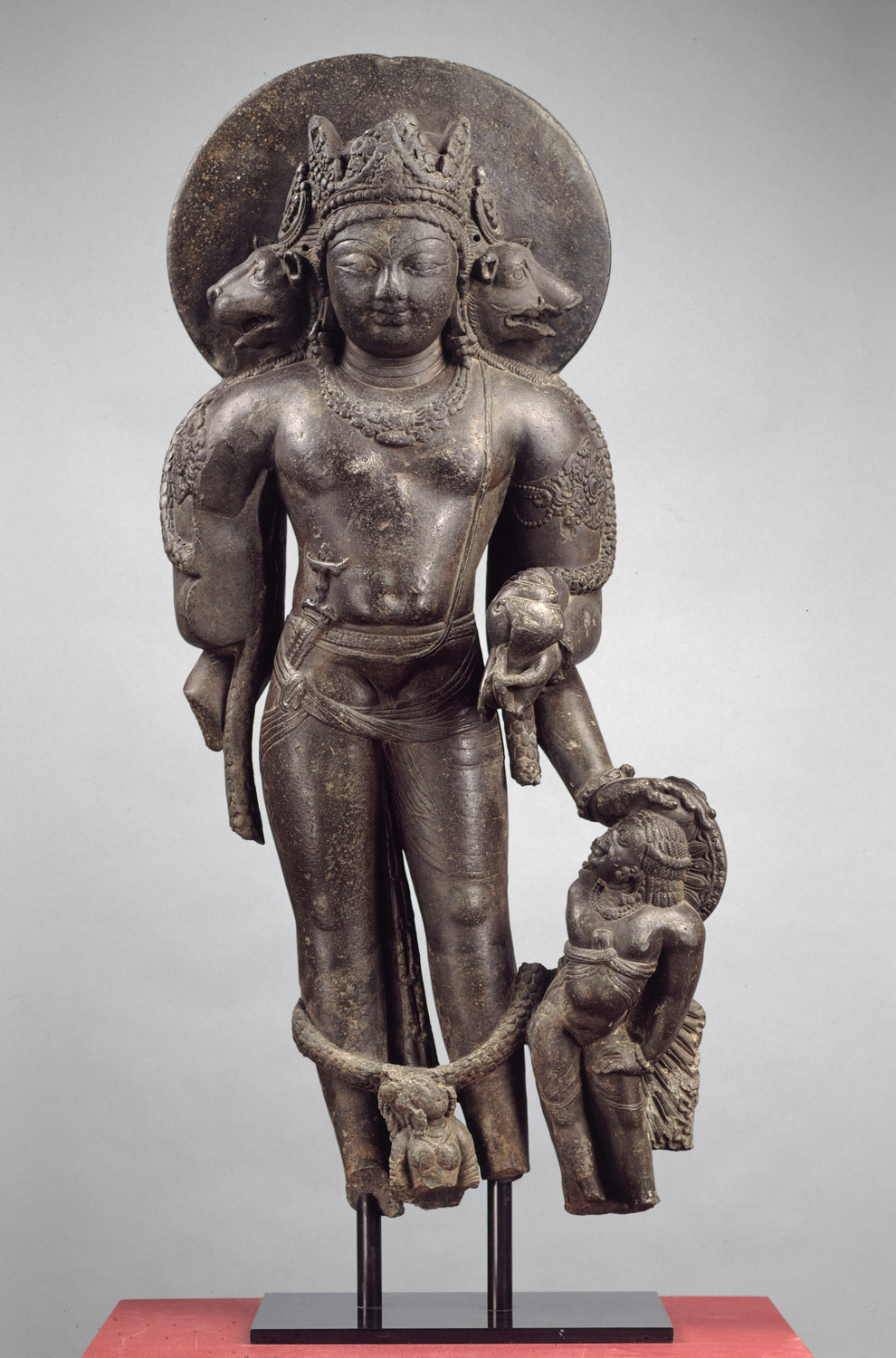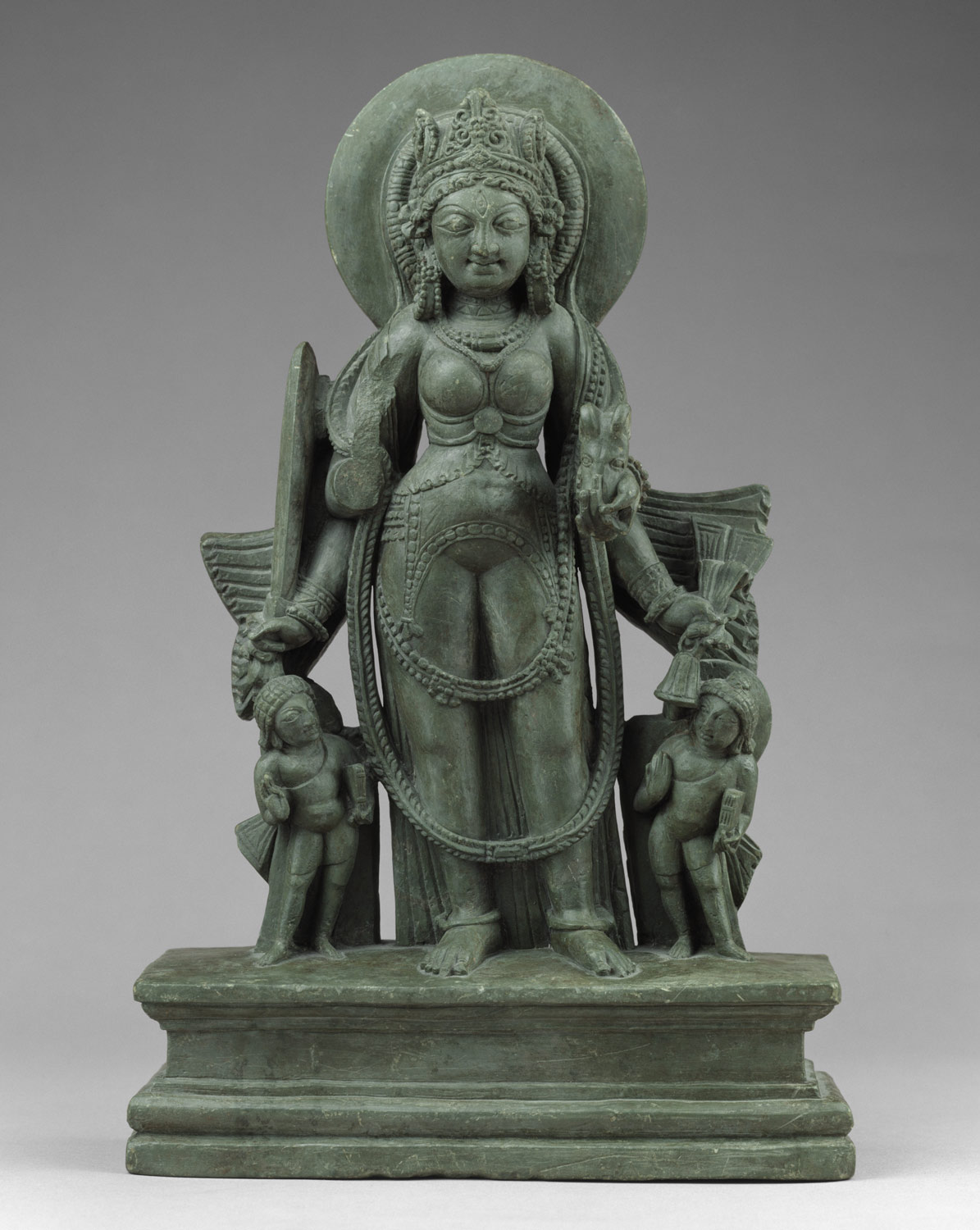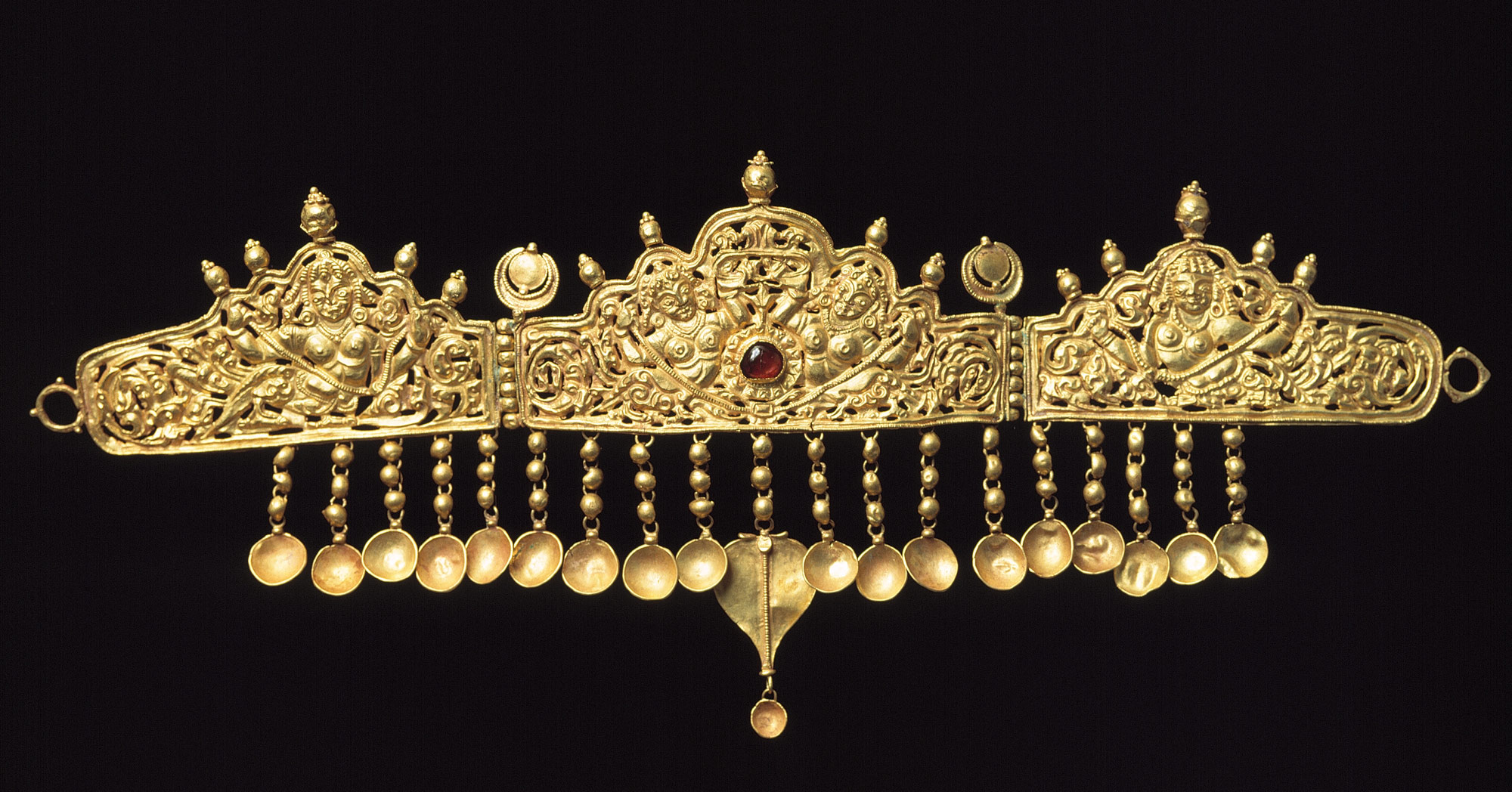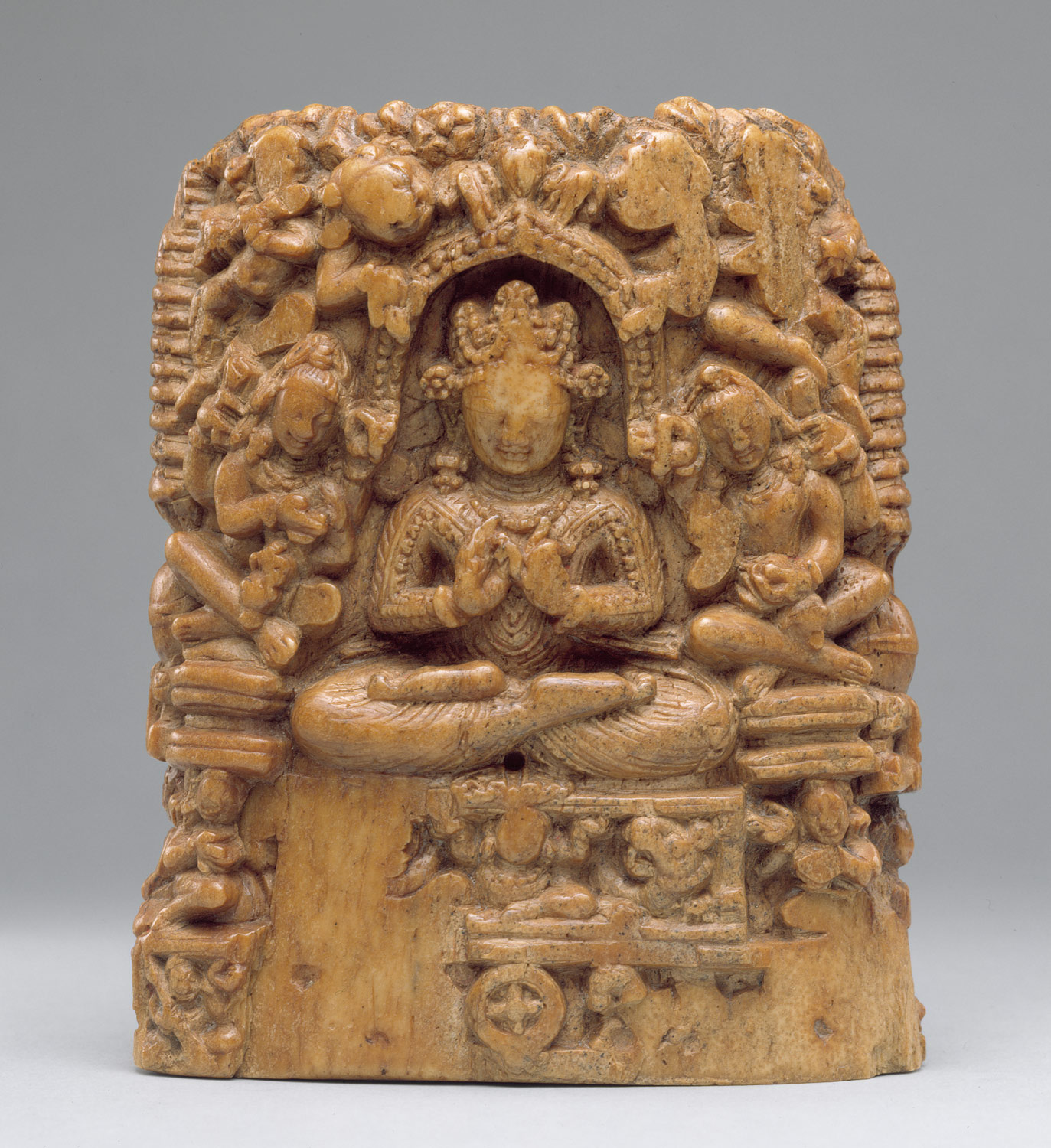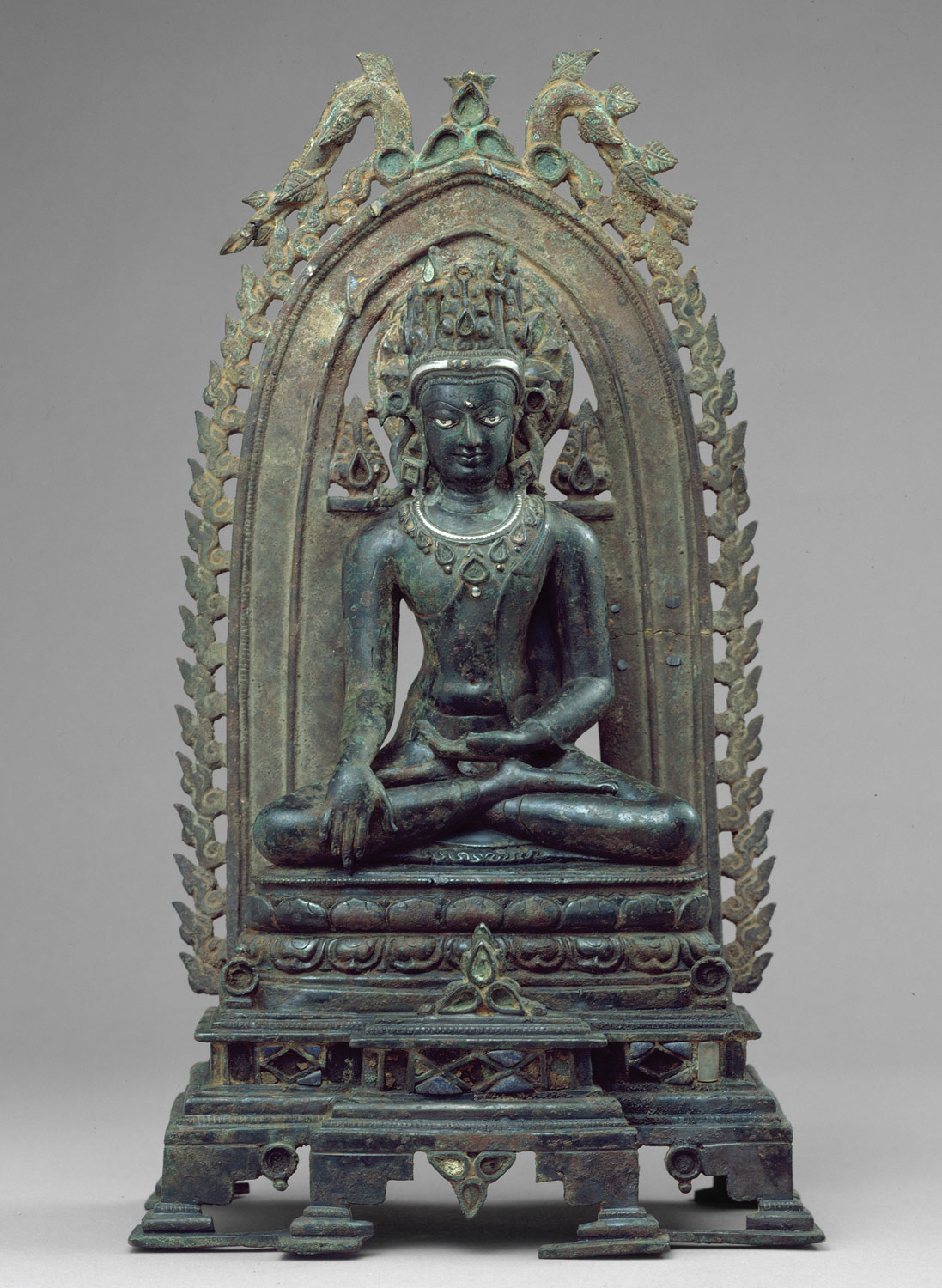The religion that we now call Hinduism begins to take recognizable shape in this period and is patronized by the powerful regional kingdoms that rise up in the wake of Gupta power. Hindu temples dominate the physical and cultural landscape of dynamic urban centers, patronized by powerful kings and managed by Brahman priests. Buddhist and Jain centers also thrive. Islam enters the South Asian cultural and religious landscape with the arrival of traders and, later, invaders from the west.
South Asia: North, 500–1000 A.D.
Timeline
500 A.D.
625 A.D.
625 A.D.
750 A.D.
750 A.D.
875 A.D.
875 A.D.
1000 A.D.
Overview
Key Events
-
ca. 500–550
Huna kings (known as Huns in Western sources) temporarily conquer the Punjab and Kashmir, contributing to the downfall of the Gupta empire. Northern India is controlled by numerous small kingdoms after the breakup of the empire.
-
ca. 600
The rise of the shakti cult in the east introduces worship of the female principle to Indian religions. The cult is thought to derive from ancient mother-goddesses and is closely associated with devotion to Shiva. The glory of the goddess is first extolled in text in the Devi Mahatmya, a portion of the Markandeya Purana (fifth to seventh century). The goddess takes many forms—some frightening and powerful, some auspicious and gentle—and is known as Parvati, Lakshmi, Shri, Kali, and Durga. In all forms, she is devi, “the goddess.”
-
ca. 606–47
Harshavardhana builds a large kingdom from his base at Punjab, eventually encompassing most of northern and eastern India until defeated by the Chalukyas in Malwa (Central India). Renowned for his patronage of Buddhism and scholarship, Harsha is also a noted poet, composing three Sanskrit works: Nagananda, Ratnavali, and Priyadarsika. Harsha exchanges six missions with the Tang government, in keeping with an established tradition of frequent contact between India and China during this period.
-
629–45
Xuanzang (ca. 602–664), a famous Chinese Buddhist pilgrim, travels throughout North India as well as the Pallava and Chalukya kingdoms to the south. His Records of the Western Regions remains an invaluable account of seventh-century India, as well as Indo-Chinese diplomatic and trade exchanges during the period.
-
ca. 650–800
Cave-temples dedicated to the Hindu god Shiva are built at Ellora and Aurangabad in Maharashtra.
-
8th century
The presence of Islam in South Asia commences with the Arab conquest of Sindh and Multan (in present-day Pakistan) in 711–13; contact continues through Arab trade on the western coast of the subcontinent.
-
ca. 730–50
Under King Lalitaditya, Kashmir, the leading power in the Punjab, serves as a major artistic and cultural center in North India. Monumental structures are built. West Asian and Hellenistic influences are prominent, and both Hindu and Buddhist religious sites are patronized. Kashmir is a major center of Buddhism until the late eighth and ninth centuries, when Shaivism also becomes popular. It is also an important center of Sanskrit learning up to the twelfth century.
-
ca. 750
The building of large temples begins at sites such as Bhubaneshwar and Puri.
-
ca. 750–1150
Buddhism flourishes in eastern India under Pala patronage. Pala rulers endow the famous university at Nalanda and establish similar complexes at Vikramashila and elsewhere. The dynasty is known for its prosperity and cultural sophistication.
-
8th–10th century
The Gurjara-Pratihara empire extends across the north, and rulers patronize a style of architecture and sculpture that integrates northern and central styles.
-
ca. 800–1200
Kingdoms controlled by Rajput rise in Central India and Rajasthan. Rajput rulers claim descent from the warrior (kshatriya) class and fight with each other as well as against invaders from the north. The four major families are the Pratiharas of Kanauj, the Paramaras of Malwa, the Chauhans of Delhi and Ajmer, and the Chaulukyas (Solankis) of Gujarat.
-
871
The governors of both Sindh and Multan (in present-day Pakistan) break from the central control of the Baghdad caliphate, establishing independent principalities. From the ninth to the beginning of the eleventh century, the Hindu Shahis control much of the northwestern frontier (the Hindu Kush), extending into Punjab in the tenth century; Hindu Shahi authority declines with the growth of Ghaznavid pressure in the tenth and eleventh centuries.
-
ca. 900–1050
Zoroastrian refugees from religious persecution in Persia arrive and settle in Gujarat. They are the ancestors of the modern-day Parsis (Persians).
-
900–1000
The first of the seven historical cities of Delhi is founded by Tomara Rajputs, who establish themselves as preeminent among competing regional powers in the northern plains after gaining independence from Gurjara-Pratihara control earlier in the century. The Tomaras build a fort (Lal Kot), later expanded and called Qila Rai Pithaura, the fort of Prithvi Raj Chauhan. The fort remains the center of the Mamluk or first sultanate based at Delhi (twelfth century onward).
-
900–1000
The Chandellas, gaining power as the Gurjara-Pratihara dynasty wanes, patronize the construction of ornate temples in the nagara, or northern, style at their capital Khajuraho in Madhya Pradresh. More than eighty temples, built around a lake, are noted for their tall spires and exceptionally fine sculptures. Most Hindu temples are ornately carved on external surfaces, and on the shikhara, the tall tower over the room where the central temple image is housed (the garbha-griha, or womb chamber).
-
ca. 998–1030
Mahmud of Ghazni (971–1030) raids northwest India. Parts of Punjab are integrated into his empire.
Citation
“South Asia–North, 500–1000 A.D.” In Heilbrunn Timeline of Art History. New York: The Metropolitan Museum of Art, 2000–. http://www.metmuseum.org/toah/ht/?period=06®ion=ssn (October 2001)
Related
Map
